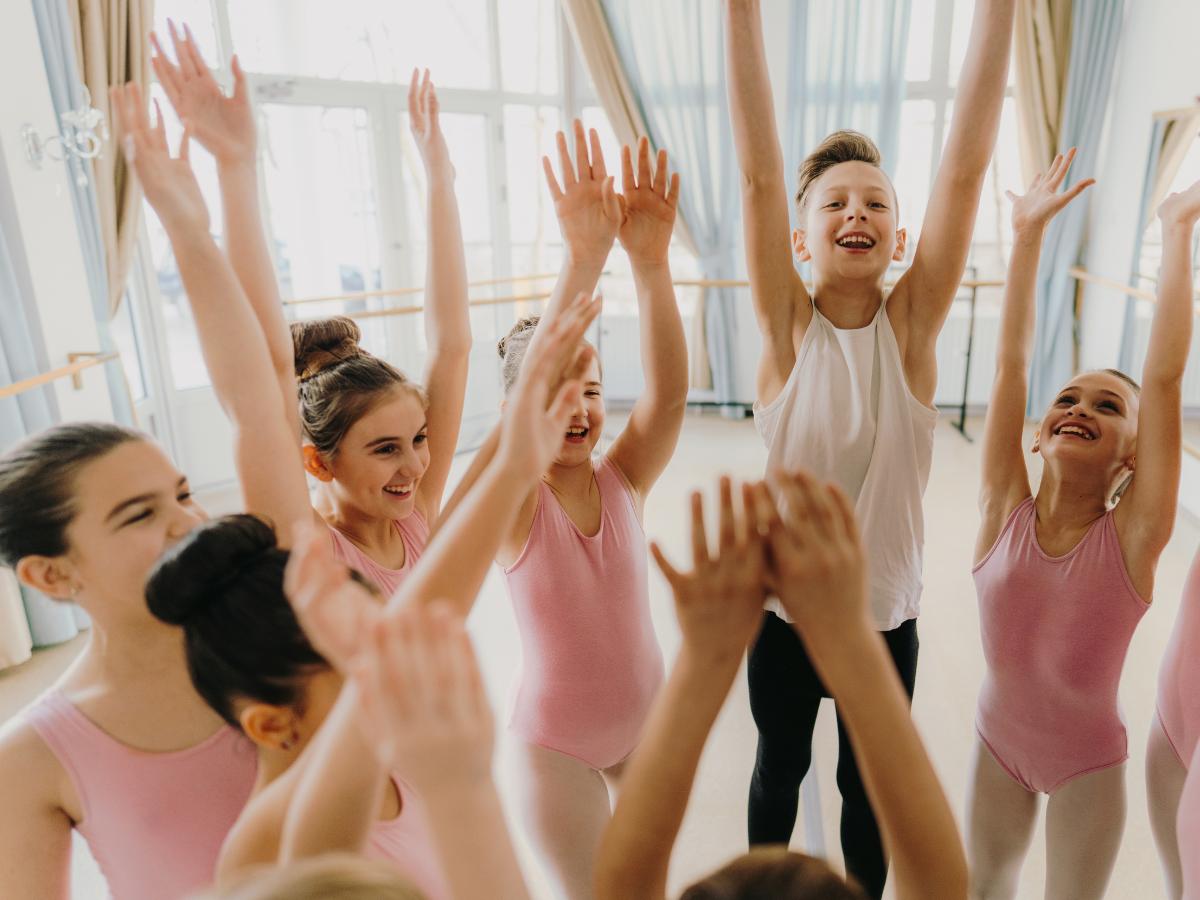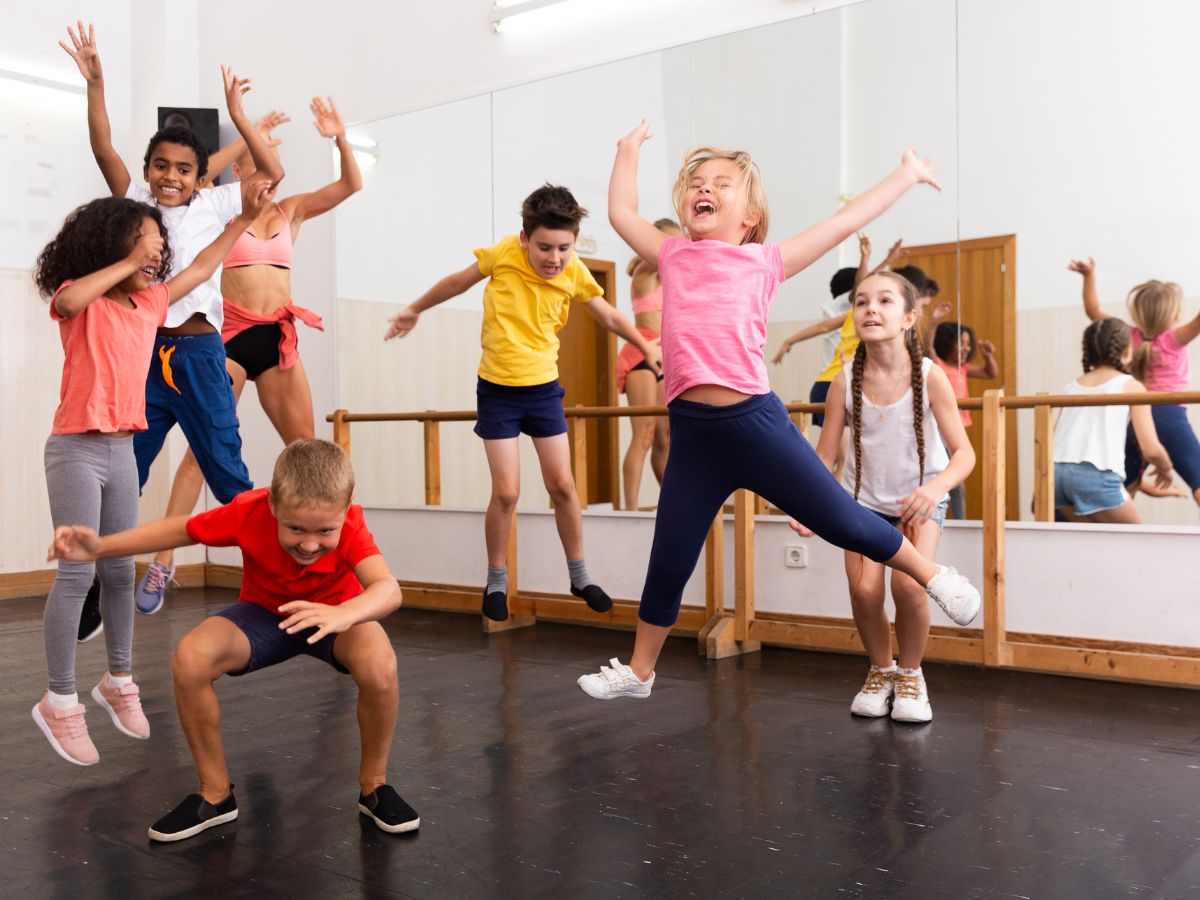It’s a joy teaching the little ones, right? They’re just so stinking cute in their little leotards and tutus. The teacher in you is thrilled when you see their faces light up at accomplishing even the smallest skill. But then there is recital time. With everything else going on in a recital, handling the young ones can be a more than a challenge – especially if you haven’t prepared them for what’s to come and enlisted performance time helpers.
There are some ways you can prepare little ones for the recital.
Spacing. This is a very important aspect of their stage presence – not just for the students to perform at their best and for the routine to look like you’ve choreographed it, but so proud parents can see their little one. Inevitably, young dancers will clump up. In an attempt to prevent this, assign specific places in line for each student.
While practicing their steps, move through the class and help them return to their “space” with a gently nudge. At the end, give them an eight count to reach their arms out and see if they are still correctly spaced. Gentle reminders are best. Harping on spacing will only make them forget their steps. Always encourage.
There is no need for elaborate markings or color coding of each student for this. You can use a simple system during the first part of the year: use eight, brightly colored Styrofoam plates and write the numbers 1-8 on the back of them. Position them “downstage” below the mirror in the studio. Stand each child in the front row in front of an assigned number. Place the children in the back row within ‘the windows,’ or spaces between each front-row dancer. It won’t take students long to be able to stay in their spaces without guidance from the plates.
There are only two simple floor markings that will help keep 9tudents of all ages on track. They’re easy to transition to the recital stage. It only takes 2 Xs. One small X is at center stage so the student in the center can find center stage with minimal effort. It is also the center for circle formations. Small X number 2 is placed center and very downstage, almost on the apron. (In the studio, this is right below the mirror.) This is the “don’t go beyond this point” mark. The stage ends here!
Mirrors. Since “stages” have no mirrors, you may want to practice without mirrors. Just cover the ones in your class so that your tiny ones and seasoned dancers won’t be disoriented when they have no mirrors for guidance. Use sheets, shower curtains, newspapers – whatever is convenient to cover the mirrors. About 2 weeks before the recital is usually enough time for students to get comfortable with this.
Entrances. A bad entrance can throw the entire routine off, so getting it right is very important. Make lists for your on-stage helpers so that they know the line-ups and who the line leaders are. Line-ups should happen in the dressing room and then march the dancers in order to their stage waiting place or directly to their entrance point. It’s a good idea (with little ones) to rehearse this too. Have only the performance area of your studio lit and simulate entrances so that little ones are comfortable with this aspect of their performance.
Steps. Give them confidence in their steps. When they get to be kindergarten age little ones are very capable of performing a tap and ballet dance of two or 2 ½ minutes each. They should begin learning their dances at least 20 weeks prior to the recital. For ones tinier than kindergarten – say 2-3 years old – its more about how to be in a class, moving to the music, waiting their turn and being aware of the space around them. Lower your expectations if you think they are going to get all their steps right. This age just doesn’t have the physicality to get it right. Spend as much time as possible helping them so prepare your music ahead of time so you minimize how much you run back and forth switching it. Props and themes work very well with this age.
During the recital, you’ll need assistance.
Help. Onstage assistants ease stress for you and little ones. It’s fine to enlist your junior/intermediate dancers for this. They aren’t as tall and won’t be as obvious onstage. These helpers can lead your youngest dancers (under 6 years of age) on and offstage. They can also demonstrate the choreography in the left and right corners of the stage. You can even have them say the next step loud enough for the dancers to hear them. These helpers can also wrangle in any free-spirited dancer who tries to go off on their own. You can even have these assistants dress to fit the theme of the little ones’ dances so their distraction level is even lower. Another option is to have the assistance demonstrate from the wings. This forces the little ones to look sideways for help and this detracts from their performance. You just have to decide which assistant placement causes the least distraction.
You’ll want to have folks stay with the little ones as they wait backstage for their stage call. These helpers can ensure every child is costumed appropriately and has props that may need. Oh – and to take them on their all-important potty breaks.
Even with this prep, practice and assistance, the little ones won’t get it perfect. Even with assistance, they’ll miss steps, mess up spacing or pay more attention to their costume than their performance. It’s fine. No one expects it to be perfect. That’s part of the charm. What’s important is for the dancers to feel confident and good about their performance and for their parents to be able to see them dance.
Sources: Dance-Teacher.com, DanceAdvantage.net, Dance.net






